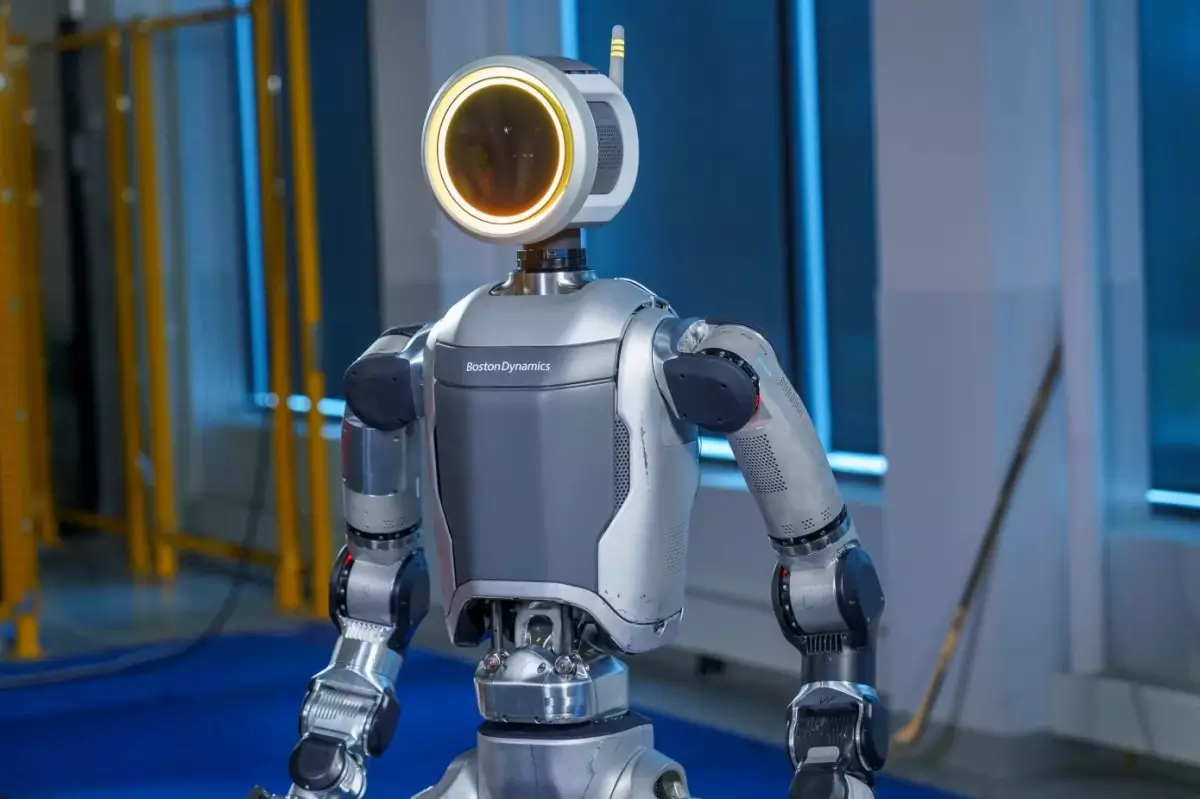In a significant move toward advancing robotic capabilities, Boston Dynamics has teamed up with the Toyota Research Institute (TRI) to integrate artificial intelligence (AI) into its electric Atlas humanoid robot. The collaboration emerges from TRI’s pioneering methods surrounding large behavior models (LBMs), akin to the increasingly popular large language models (LLMs) that power AI applications like ChatGPT. This partnership seeks to explore and innovate the realms of robot learning, a spectrum where rapid advancements might redefine both the capabilities of humanoid robots and the very essence of automated assistance in everyday life.
A year ago, during a visit by TechCrunch to TRI’s scholarship-laden Bay Area campus, Gill Pratt, the head of TRI, illuminated the obstacles and breakthroughs in robot learning. Traditional machine learning endeavors often mandated extensive training datasets, sometimes requiring millions of cases to achieve a semblance of operational efficiency. However, Pratt highlighted a pivotal shift in this paradigm. Through rigorous and diverse training, TRI has managed to enhance robot performance to a notable 90% accuracy in executing household tasks, such as flipping pancakes. This accomplishment illustrates a narrowing gap between human-level capabilities and robotic efficiency, particularly in tasks that require nuanced physical movements.
While traditional methods saw robots faltering with numerous training iterations, current methodologies allow for effective learning with just dozens of varied scenarios. This not only accelerates the training process but also affords robots the chance to adapt to real-world complexities without crumbling under the burden of excessive training cases.
The hardware prowess of Boston Dynamics establishes a solid foundation for this ambitious partnership. Renowned for its self-sufficient Spot robot and other innovative mechanisms, Boston Dynamics has proven its mettle in developing advanced robotics. However, the intricacies involved in programming robots to perform multifaceted tasks autonomously poses a distinct challenge. As Robert Playter, the CEO of Boston Dynamics, reinforces, the collaboration with TRI exemplifies the merging of robust research and development initiatives aimed at solving some of the most daunting challenges in the field. This partnership aims to meld TRI’s cutting-edge AI methodologies with Boston Dynamics’ hardware expertise to pave the way for versatile, general-purpose humanoids.
Over the years, the evolution of the Atlas robot has spurred a mix of anticipation and excitement within the tech community. The electric variant of the Atlas—unveiled recently—marks a modernization of an earlier hydraulic model, shifting toward a quieter and potentially more energy-efficient design. Though public interactions with the Atlas have been limited, glimpses into its capabilities, such as performing pushups, signal remarkable strength and agility. This competitively positions Boston Dynamics against other industry frontrunners like Agility Robotics, Tesla, and Figure, who are also exploring their own robotic innovations.
With Toyota and Hyundai—parent companies of TRI and Boston Dynamics, respectively—being staunch rivals in the automotive sector, their collaborative venture is especially noteworthy. While TRI shifts its focus away from hardware development, preferring to lean on partners like Boston Dynamics, the synthesis of strengths from both teams could revolutionize how robots are perceived and deployed in various sectors.
The ultimate goal emerges as a pursuit toward developing a genuinely general-purpose machine, with the ambition of enabling robots to parallel or even surpass human capabilities. While hardware advancements inch closer to this ambitious objective, achieving artificial general intelligence remains an elusive target. The introduction of Software Development Kits (SDKs) for versatile robots like Spot significantly boosts the variety of tasks that can be executed. Yet, true artificial general intelligence—where machines can autonomously learn and adapt like humans—lies further in the future, possibly raising ethical dilemmas as they become increasingly capable.
As Boston Dynamics and TRI embark on this remarkable journey, the landscape of robotics teeters on the brink of transformation. The infusion of advanced AI into humanoid robots presents an opportunity not just for enhanced capabilities but also for revolutionizing daily human interactions with machines. Whether this collaboration ultimately leads to the realization of general intelligence in robotics remains to be seen; however, the implications of their research could shift societal perspectives on robotics from labor-saving devices to essential partners in the human experience. The world watches as this partnership unfolds, promising an exciting era defined by ingenuity and technological evolution.

